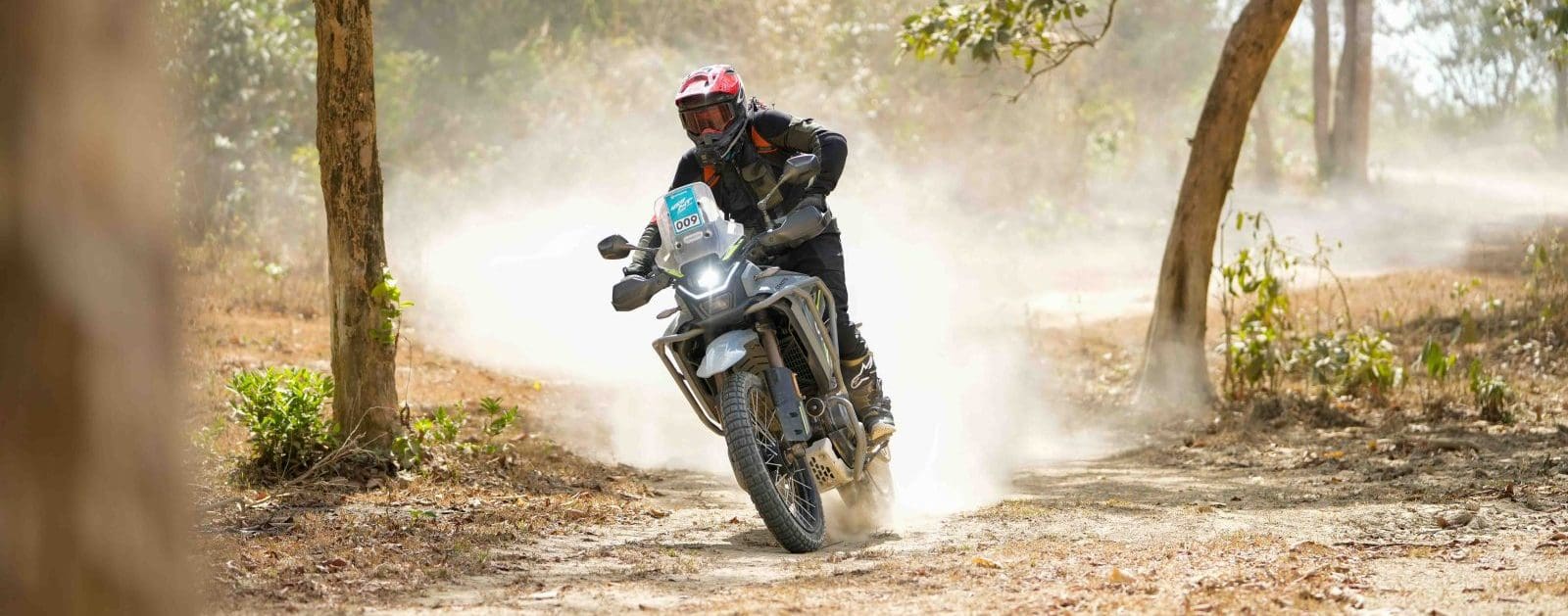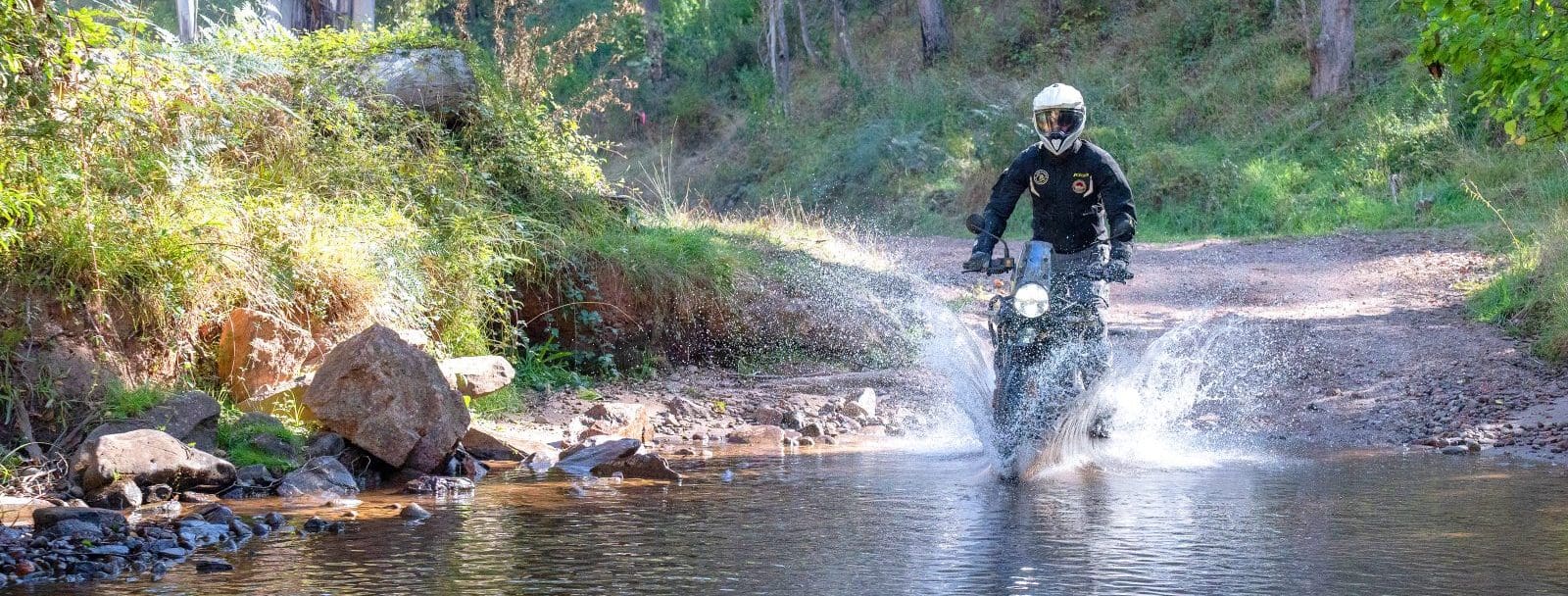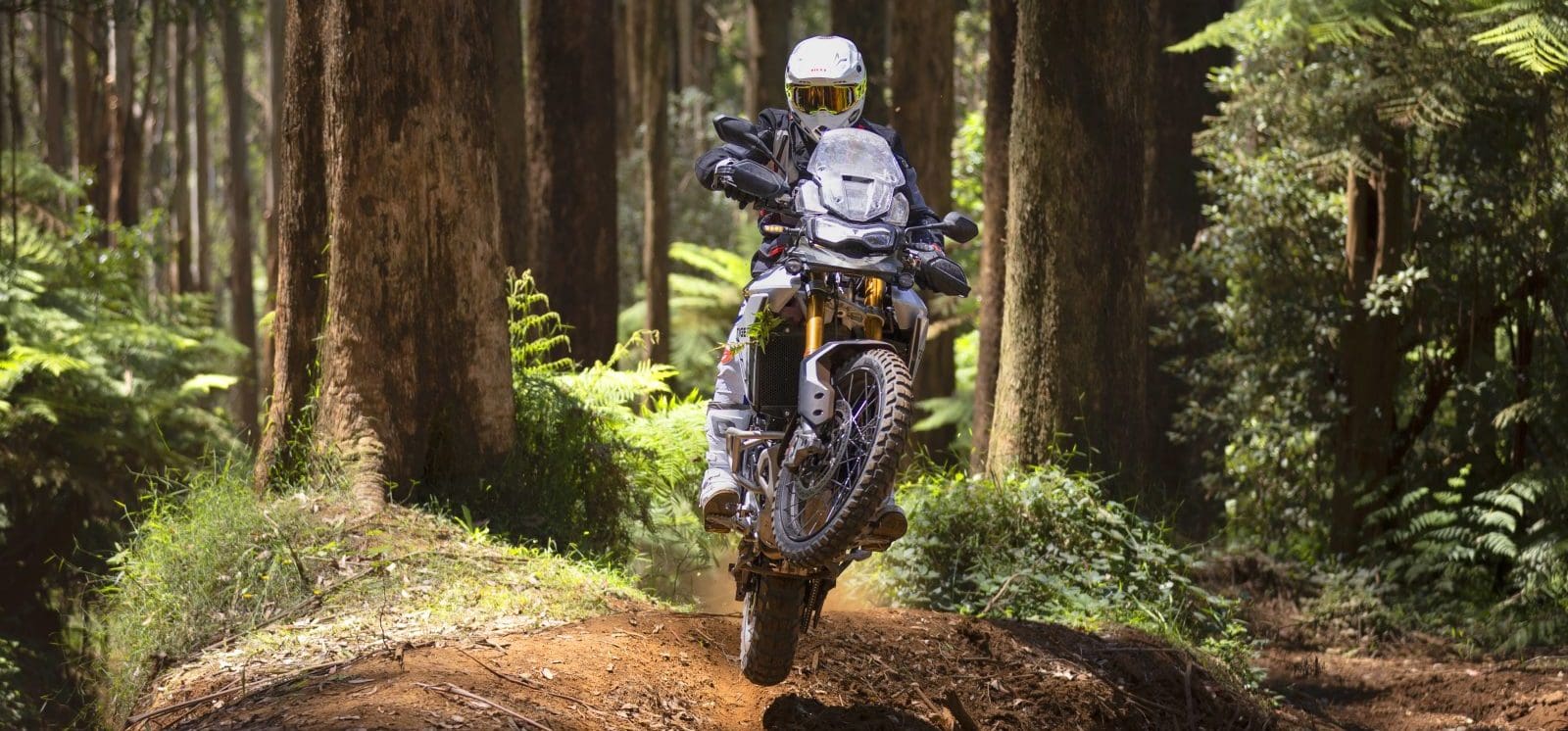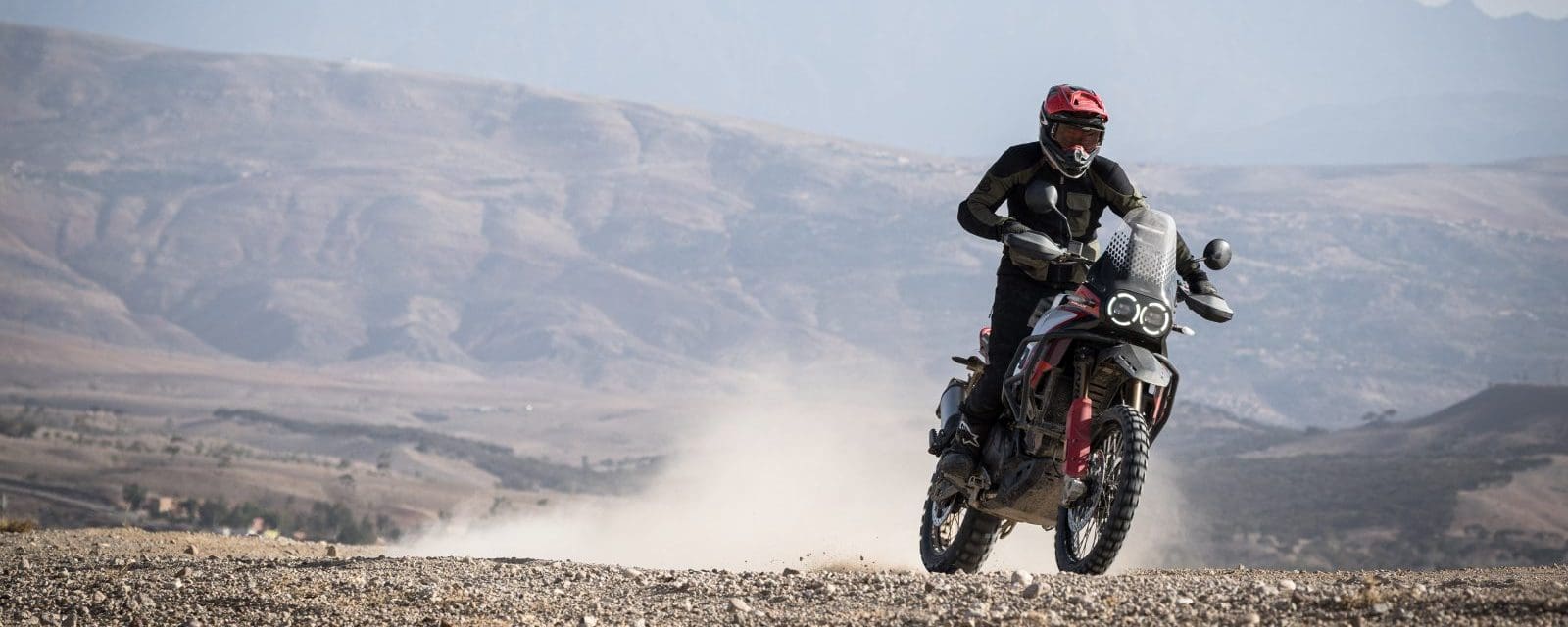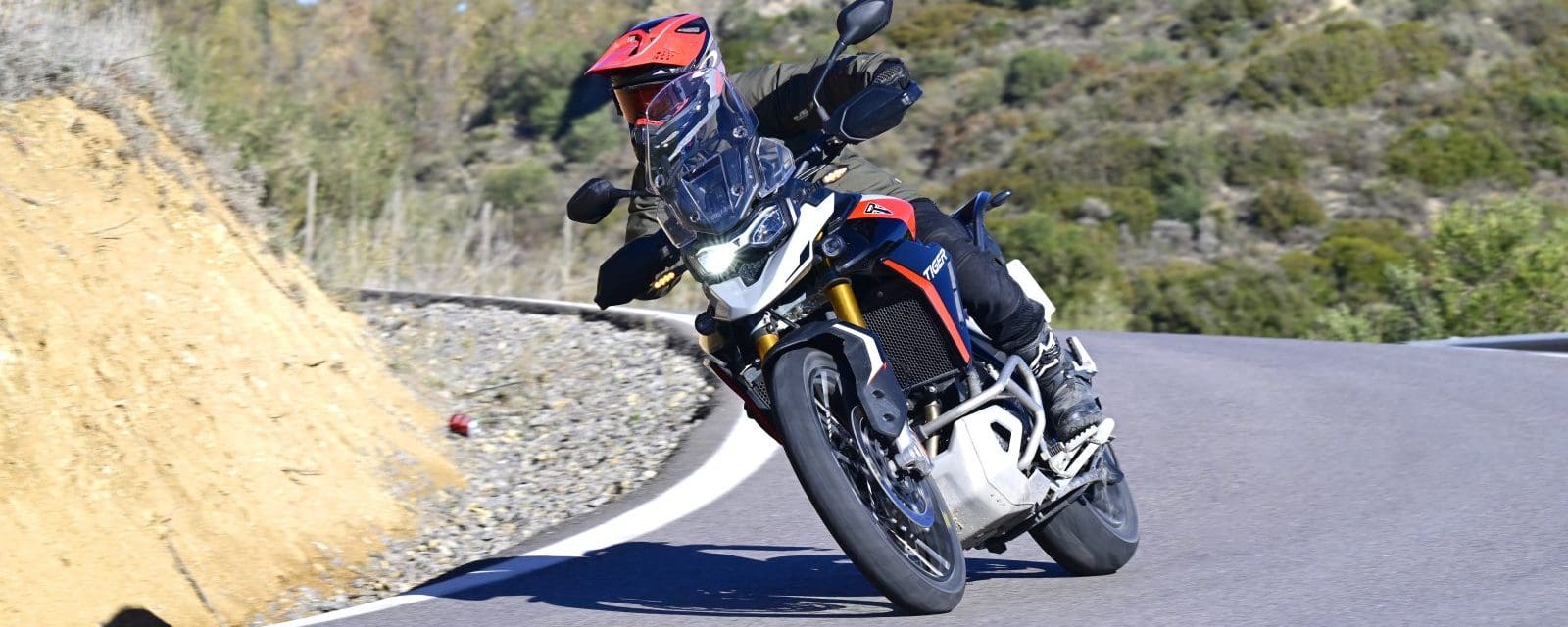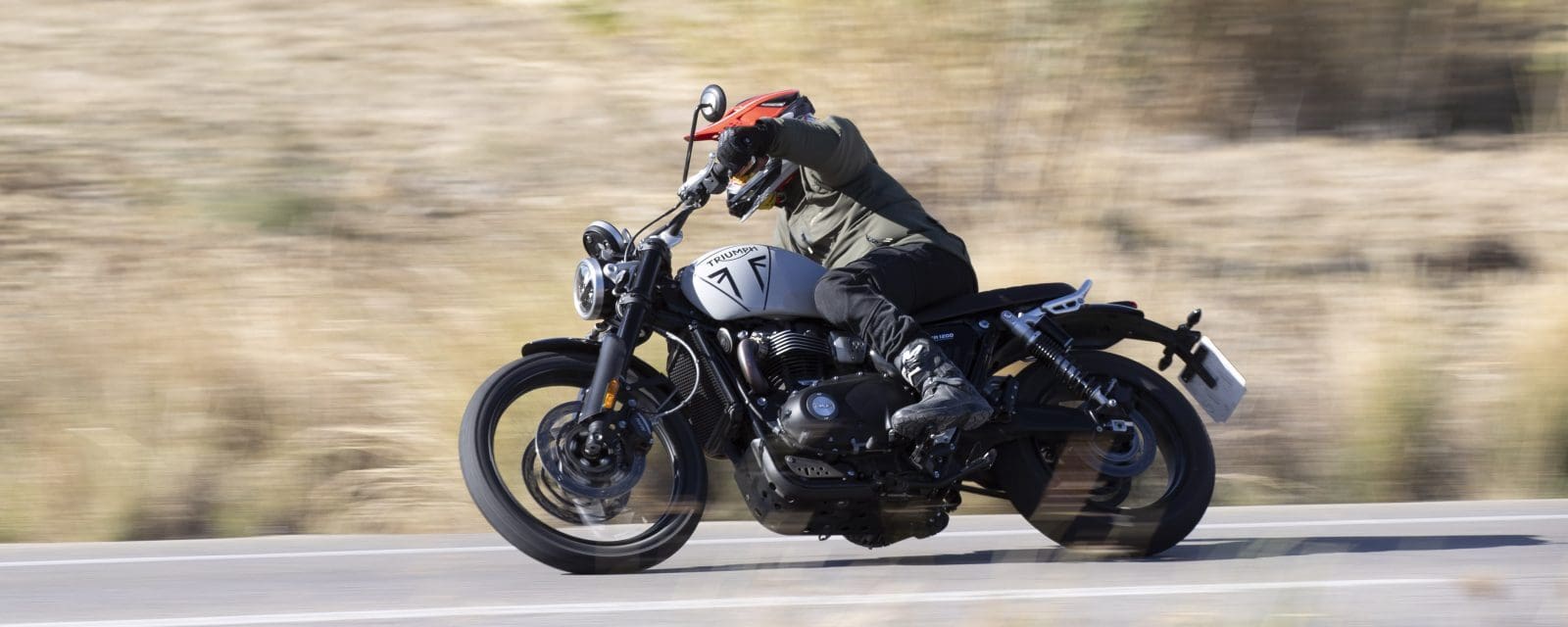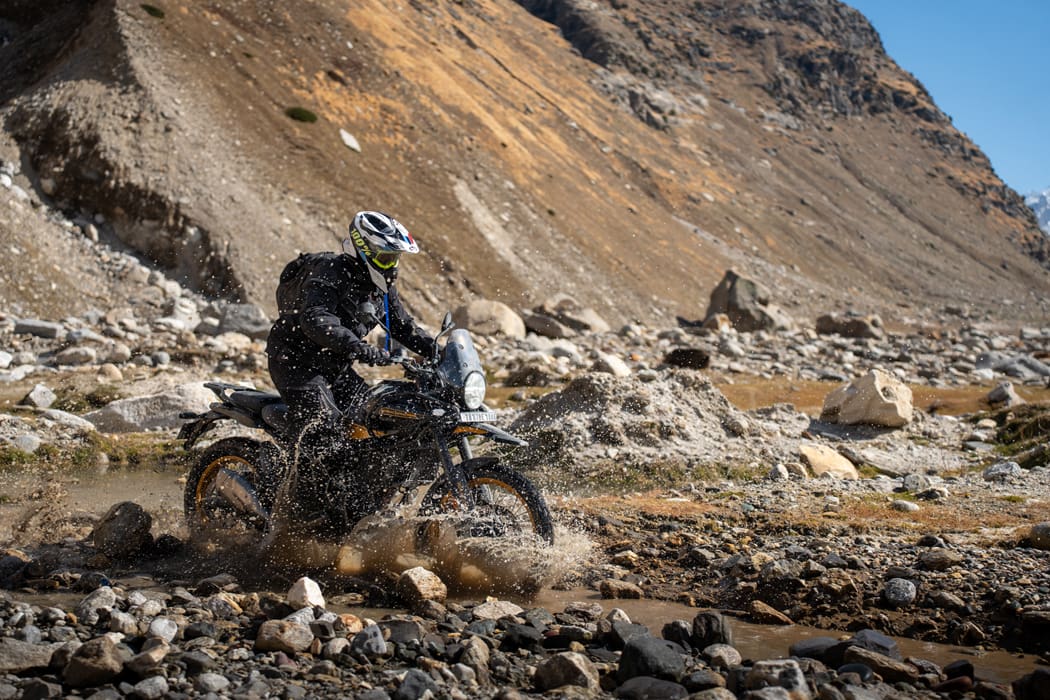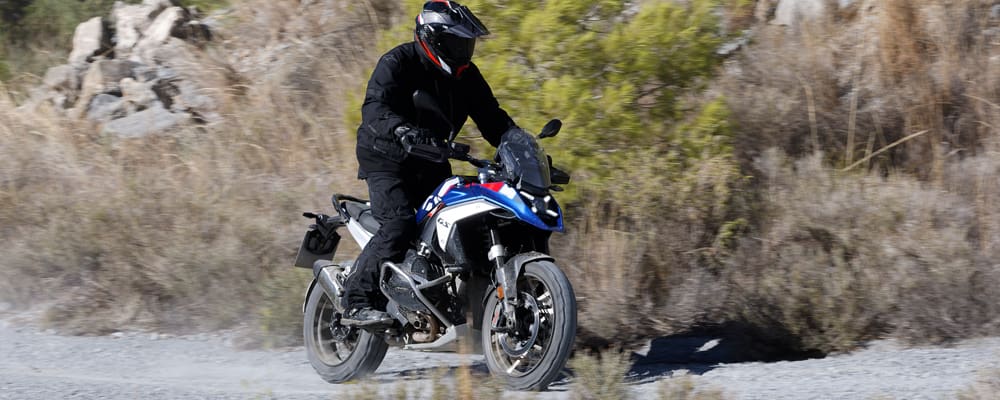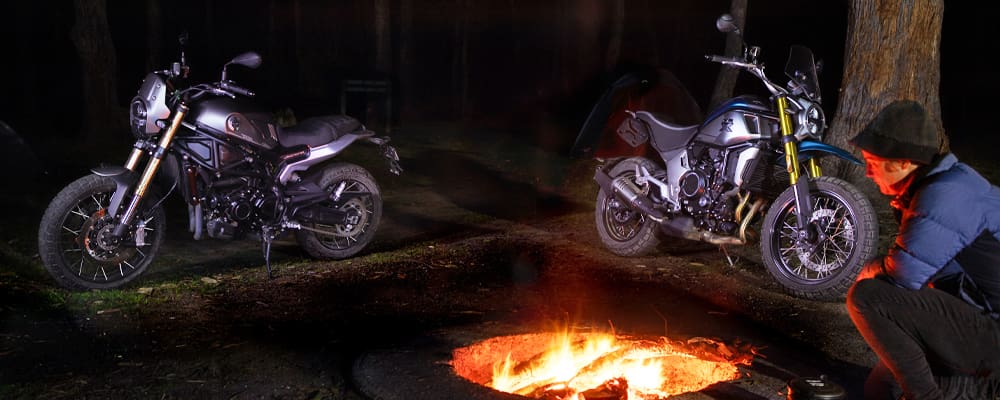It’s not often a manufacturer underestimates its own machine, but with the new V85TT, I reckon Moto Guzzi is aiming a little low with its claims the bike is an all-roader, as opposed to a dedicated adventure bike. It’s far more capable than even the Maranello factory gives it credit for.
Sir Alan Cathcart rode this bike back in Vol 68 No 20, however his test was more focussed on the bitumen prowess of this bike. The Australian launch, held around the snowy hills of Eildon in Victoria, allowed me to dive deeper into this bike’s off-road ability, as well as its bitumen talents, albeit on consistently wet roads. And I discovered a bike more adept at off-road touring than even its manufacturer claims.
Never mind the 19-inch front wheel – ‘proper’ adventure bikes have 21-inch front hoops – there’s more to making a good adventure bike work off-road, which is exactly why the Moto Guzzi V85TT works so well in a country like Australia.
If I am on an adventure bike, I don’t want to be worrying if I will make the next fuel stop or not. Aside from the hassle of running out of go juice somewhere remote, it can be downright dangerous. As for the hassle of carrying extra fuel, that can be almost as dangerous, not to mention smelly, weighty and depriving you of luggage space for more important items such as, you know, food.

I’ve had some big rides tainted by the constant planning and route deviation around fuel availability. Good fuel range is crucial – the Moto Guzzi shines here. The combination of a 23L fuel tank and a miserly engine means we didn’t fill up once over the duration of the two-day, 350-odd km launch, with plenty left to go. Depending on conditions and your throttle yanking, a fuel range of 500km is achievable. Deep sand and a Dakar approach to riding will reduce that, obviously, but the new engine sips fuel (4.6L/100kms) if you want it to. You won’t be missing the good bits just because you need fuel on the V85TT.
And that new V85 engine isn’t just good for fuel range. Titanium inlet valves, roller-cam followers, a 30 percent reduced reciprocating mass and multi-map engine management modernise a bike and allows good mechanical grip when combined with shaft drive and Michelin tyres, delivered in a manner suiting all kinds of surfaces.
There’s a reason riders are shifting to lower-capacity adventure bikes and this 853cc powerplant is one of those reasons. Relatively modest power and torque outputs (80 of both horsepower [60kW] and Nm, at 7750 and 5000rpm respectively), compared to larger-bore machines doesn’t tell the full story; the flat torque curve does.

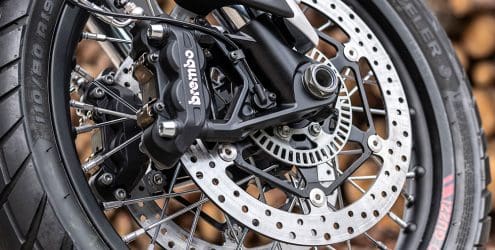
Time and again I expected the bike to break traction in the slippery trails above Eildon, instead the bike’s power delivery and highly capable Michelin Anakee rubber combined to deliver traction and drive where I thought there would be none.
One run between the snow on sludgey, clay-infused logging trail remained predictable and fun the whole way – we hadn’t even dropped the tyre pressures. The grip is impressive, just the kind of thing that leads to a great ride. Instead of puckering up and hoping for the best while winding on the throttle, the V85TT lets you keep tyre-cleaning momentum up, rather than having to go slow enough for the tyre grooves to fill with mud and slow you further.
The modes come into play on this kind of terrain, too, and this is one area the Moto Guzzi can hem the freedom – if you make the wrong choice. The three modes (Road, Rain and Off-Road) are pre-set, with no adjustment possible, other than turning traction control off altogether within each mode, and the disablement of ABS in Off-Road mode only.
Road mode has the most responsive throttle setting, which I preferred for off-road use, however the traction control is hard-set to medium (from high in Rain mode and low in Off-Road). Leaving traction control on in Road mode on the dirt is an exercise in frustration, as any wheel slip whatsoever is tempered by the traction control cutting in. It’s a gentle action, but I simply couldn’t get any momentum. The bike wasn’t trying to break into insane wheelspin, because the traction is so good, the system was just picking up the tiny wheel slip and slapping it down.

Changing to Off-Road mode (easy to do on the fly) removed that direct throttle feel, but made for much more agreeable traction-control response. The option, therefore, was to either pull over and turn traction control off and stay in road mode (you can’t turn it off while moving), or simply switch to Off-Road mode as soon as the ‘Gravel Road Ahead’ signs appeared, and flow on.
The interesting thing about Off-Road mode is the rear ABS switches off. This is a feature many other manufacturers also employ, and I really don’t understand why. ABS is there because riders make mistakes with their braking, and none more so than with their rear brake. We know the incidents of pre-ABS riders simply slamming their rear brake on when presented with danger and then riding the locked up bike into the very thing that scared them, without even touching the front brake, is higher than it should be.
The same thing can happen off road – a rider overcooks a corner entry, stomps on the rear brake because no one likes reaching towards danger, most of us drive cars, and so on, then exits backwards off the bike as it locks and comes around. No one can answer me as to why this feature actually exists, other than to say it’s fun to brake slide a 240kg bike into a corner.
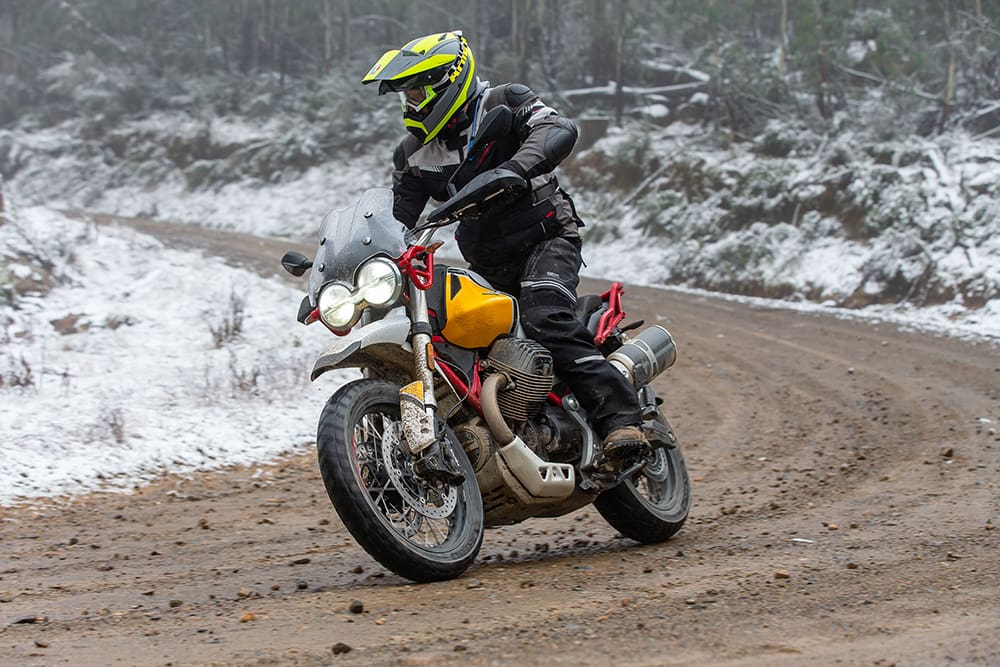
That’s my rant almost over, but if someone can explain to me why unhooking rear ABS is fine, but being able to switch off TC on the fly isn’t, then I’m all ears. It’s not just Moto Guzzi that does this; KTM and BMW do it too, among others (though you can switch TC off on some Beemers on the fly – for now).
As it stands, casually slipping the V85TT into Off-Road mode did the job for the conditions we rode, meaning mud, clay and wet dirt. We weren’t leaping off erosion mounds or attacking sand dunes, in that way the V85TT may be challenged (or maybe not…), but for the off-road variety of trails we came across, it was more than up to it. Stable, fuel efficient, comfortable and amazingly capable.
Speaking of amazing, I need to explain the awesomeness that is the new gearbox. Moto Guzzis always have some level of quirkiness, a reason Moto Guzzi lovers love them, but perhaps a barrier for more mainstream bike lovers in the past. It turns out someone at the factory decided to lower the quirky level a little by patenting a new gearbox part, and it makes a world of difference!
The six-speed cog box runs a reinforced clutch, anti-shock input shaft and a low friction gearset, so it feels like a modern gearbox.
The amazing bit is the patented drive dog engagement system. It is astounding.

Moto Guzzis have always clunked into first gear with little mechanical sympathy. The same can be said for the first-to-second shift. It adds a harshness to them, and sounds a bit rough, though they have been doing it for years – until now.
The new engagement system has created an almost unnatural push into first gear for the V85TT – there’s no lurch, click, crunch or, well, anything. The bike is simply in first, with no other signal it is other than the fact the lever won’t go any further down and the bike will move off when you release the clutch. It took a little while to get used to; it’s so smooth, but it’s now hard to ride anything else without thinking of that V85’s incredible gearbox action.
Every gear change is similarly buttery, and, when I got used to timing it even better, it was so slick, the thing rivals any other bike for gearbox butteriness. I never thought I’d write that about a Moto Guzzi. The net result is an entire bike that feels more refined, modern and simply sweeter to use. The Moto Guzzi character is still there – the bike still rocks to the side as you rev the transverse-mounted V-twin at standstill, for instance – but the bike overall feels more refined and tighter than Guzzis before it.
Helping in that area is the suspension and chassis set up. The steel-trellis frame bolts to the engine, which acts as a stressed member, as usual, with the swingarm pivoting directly off the gearbox, aiding drive shaft alignment and stability, and giving the KYB boingers something solid to act off.
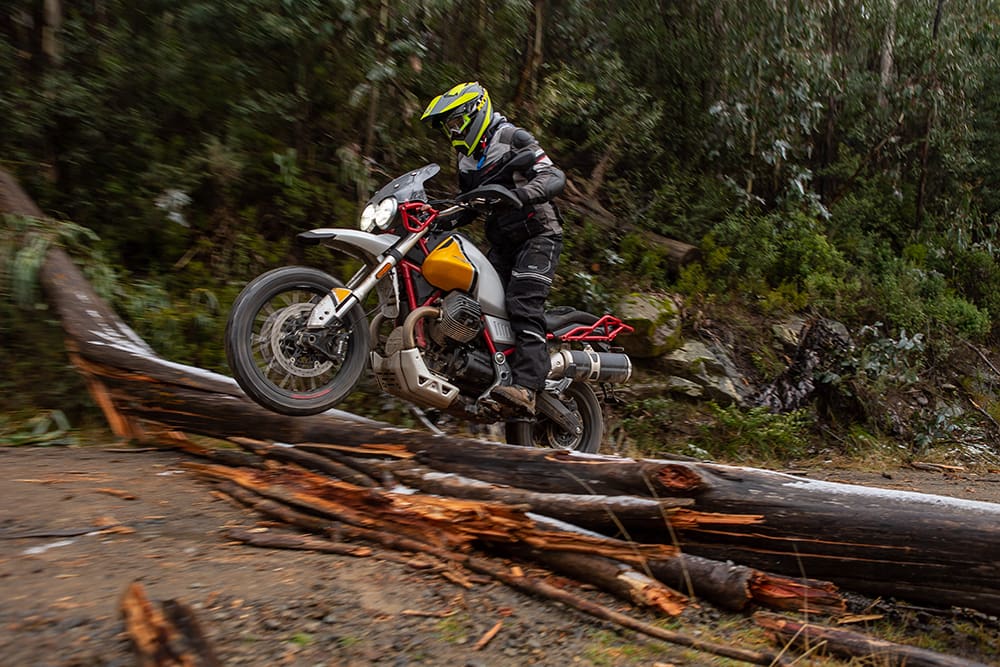
They aren’t the high end kit KYB can produce, however spring preload and rebound damping adjustment is available at each end, along with dual-rate springs, and they are comfortable and predictable across a range of terrain, off road and on. Very few shocks are passed through the bike to the rider (relatively speaking – leap off an erosion mound in fourth and it may be a different story), aided by an excellent seat, and the bike is somewhere you want to be until that 500km fuel range is explored.
The bike isn’t super nimble, but the stability is so good off-road that I don’t feel the balance between the two is amiss. The cost of that stability isn’t too much to accept.
I also find the ride position excellent, whether sitting upon the seat or standing. The seat is close to perfect for a long-distance bike, wide enough to spread the load, certainly well padded (I didn’t get a hint of butt pain) but not too wide, as that can affect getting the foot down on an off-road bike.
You need to remove the rubber footpeg inserts if it’s slippery and you want to stand up (you need a 10mm spanner to do it), and the footpegs are probably too narrow for an adventure bike, but otherwise the ergos are solid.
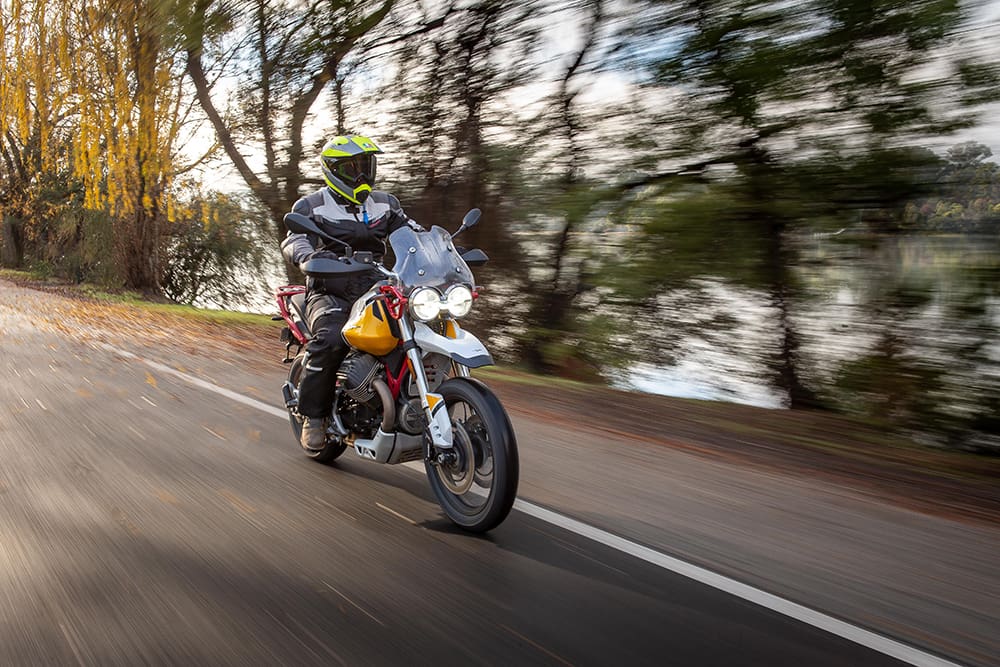
If you like plugging things into a bike (GPS, heated gear, etc), the Guzzi has a high capacity 430 watt alternator, and a USB plug to charge devices on the fly. The Cobo full-colour TFT dash is a beauty, too, with a similar look to the Aprilia item, though less to do, as the electronics aren’t to the same level. You can configure certain looks though, and you will be able to link your phone via a yet-to-arrive app. The app will apparently allow live tracking, music via a headset and navigation.
The bikes are heated grips compliant, too, though our bikes had beaten the heated grips units to Australia, so the constant ice warning on our dashes was met with ill-humour.
With excellent fuel range, a seat to match, a sweet engine and even sweeter gearbox, heaps of natural traction, quality ride position and being really fun to ride, the V85TT is a surprisingly capable adventure bike option, particularly in the mid-capacity range. The 19-inch front wheel says it’s not for crossing the Simpson Desert – but I reckon it could. On one tank of fuel.
I really enjoyed the V85TT and if that patented dog engagement system in that gearbox isn’t everywhere in three years, I’ll eat my helmet. The Moto Guzzi is a different take on a modern adventure, go-anywhere machine and it does the job really well. Even better, I suspect, than the factory believes.
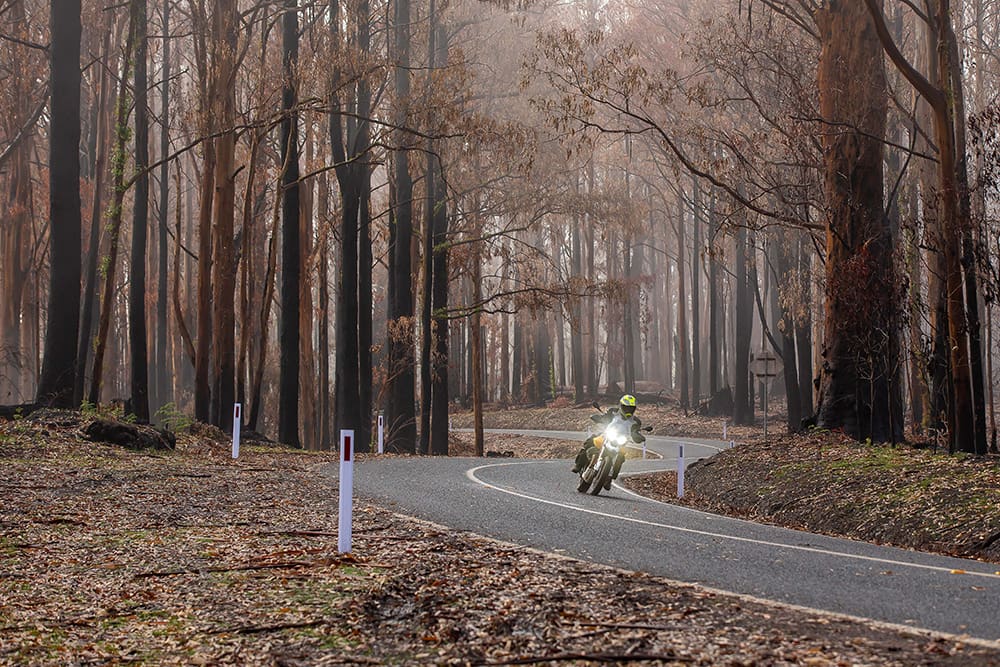
Test Sam Maclachlan Photography iKapture


